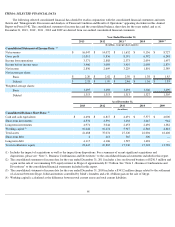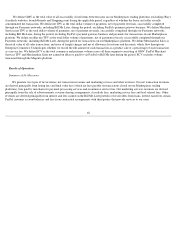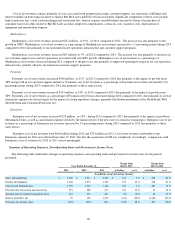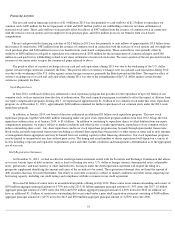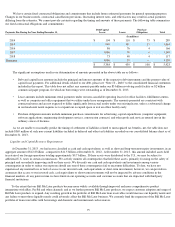eBay 2013 Annual Report Download - page 74
Download and view the complete annual report
Please find page 74 of the 2013 eBay annual report below. You can navigate through the pages in the report by either clicking on the pages listed below, or by using the keyword search tool below to find specific information within the annual report.
The following table summarizes operating expenses, non-operating items and provision for income taxes as a percentage of net revenues
for the periods presented:
Sales and Marketing
Sales and marketing expenses consist primarily of advertising costs and marketing programs (both online and offline), employee
compensation, contractor costs, facilities costs and depreciation on equipment. Online marketing expenses represent traffic acquisition costs in
various channels such as paid search, affiliates marketing and display advertising. Offline advertising includes brand campaigns, buyer/seller
communications and general public relations expenses.
Sales and marketing expense increased by $147 million , or 5% , in 2013 compared to 2012 . The increase in sales and marketing expense
was due primarily to higher employee-related expenses (including consultant costs, facility costs and equipment-
related costs), partially offset by
a decrease in professional services fees and marketing program efficiencies. The decrease in marketing program costs was due primarily to a
shift in focus from customer acquisition to customer retention (for which certain associated expenses are recorded as a reduction in revenue
instead of sales and marketing expense). Sales and marketing expense as a percentage of net revenues were 19% and 21% in 2013 and 2012 ,
respectively.
Sales and marketing expense increased by $478 million, or 20%, in 2012 compared to 2011. The increase in sales and marketing expense
was due primarily to higher employee-related expenses (including consultant costs, facility costs and equipment-related costs), marketing
program costs to drive consumer engagement and the impact from acquisitions, primarily GSI. Sales and marketing expense as a percentage of
net revenues were 21% in both 2012 and 2011.
Product Development
Product development expenses consist primarily of employee compensation, contractor costs, facilities costs and depreciation on
equipment. Product development expenses are net of required capitalization of major site and other product development efforts, including the
development of our next generation platform architecture, migration of certain platforms, seller tools and Payments services projects. Our top
technology priorities include mobile, user experience, search, platform and new products such as payment code and those that allow us to
continue pursuing our omnichannel strategy. Capitalized internal use and website development costs were $299 million , $285 million and $212
million in 2013 , 2012 and 2011 , respectively, and are primarily reflected as a cost of net revenues when amortized in future periods.
Product development expenses increased by $195 million , or 12% , in 2013 compared to 2012 . The increase was due primarily to higher
employee-related costs (including consultant costs, facility costs and equipment-related costs) driven by increased investment in platform,
search, mobile and offline, as well as an increase in professional service fees. Product development expenses as a net percentage of revenues
were 11% in both 2013 and 2012 .
Product development expenses increased by $338 million, or 27%, in 2012 compared to 2011. The increase was due primarily to higher
employee-related costs (including consultant costs, facility costs and equipment-related costs) driven by increased investment in platform,
search, mobile and offline and the impact from acquisitions, primarily GSI. Product development expenses as a net percentage of revenues were
11% in both 2012 and 2011.
69
Year Ended December 31,
2013
2012
2011
Sales and marketing
19
%
21
%
21
%
Product development
11
%
11
%
11
%
General and administrative
11
%
11
%
12
%
Provision for transaction and loan losses
5
%
4
%
4
%
Amortization of acquired intangible assets
2
%
2
%
2
%
Interest and other, net
1
%
1
%
13
%
Provision for income taxes
4
%
3
%
6
%


